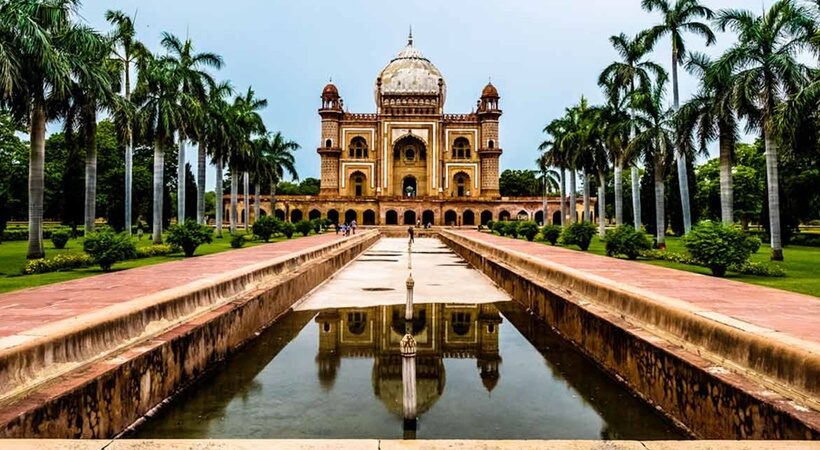The magnificent Safdarjung Tomb is considered to be the last monumental tomb garden of the Mughals. It was planned and built like an enclosed garden tomb in line with the style of the Humayun’s tomb and the construction got finished in 1754. Built in the Mughal style with red sandstone and marble, the monument has an ambience of spaciousness and an imposing presence with its domed and arched red, brown and white coloured structures.
The tomb was built by the son of the Safdarjung, Nawab Shujaud Daula and an architect from Abyssinia called Bilal Muhammad Khan designed the structure. The tomb was constructed for the Mirza Muqim Abul Mansur Khan, popularly known as Safdarjung, who ruled over Awadh and happened to be an independent ruler of Awadh. He was the viceroy of Muhammad Shah. When Mohammed Shah Ahmed Shah ascended the throne of the Mughal Empire in Delhi in 1748, Safdarjung was made the Prime Minister (Vazir) of the empire with the title of Vazir ul-Mamalk-i-Hindustan.

The tomb has four key features: The Char Bagh plan with the mausoleum at the centre, a nine-fold floor plan, a five-part façade and a large podium with a hidden stairway. The main entry gate to the tomb is two-storied and its façade has very elaborate ornamentation over plastered surfaces and is in ornate purple colour. There is an inscription in Arabic on the surface and its translation reads “When the hero of plain bravery departs from the transitory, may he become a resident of god’s paradise”. The rear side of the façade, which is seen after entering through the gate, has many rooms and a library. To the right of the gate is the mosque, which is a three-domed structure marked with stripes.

Image Credits: Wiki Commons
Entering through the main gate gives a perfect view of the mausoleum. Its walls are built high and the central dome, which is the main mausoleum of Safdarjung, is built over a terrace. The central chamber, square in shape, has eight partitions with a cenotaph in the middle. There are four towers around the main tomb in an underground chamber in the mausoleum, which houses the graves of Safdarjung and his wife. The ceiling of the mosque has also been plastered, painted and ornamented.



















